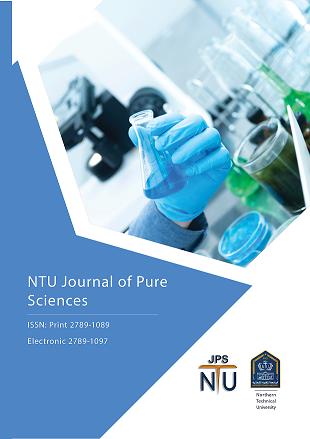Prevalence of Blastocystis hominis in patients with diabetes mellitus in Balad City , Salahaddin Province, Iraq
DOI:
https://doi.org/10.56286/ntujps.v2i4.506Keywords:
Diabetes mellitus (DM), Blastocystis hominis (B.hominis), ParasiteAbstract
Blastocystis sp. is anaerobic,global, eukaryotic, found in the human
gastrointestinal tract. The purpose of the current study is to estimate the
prevalence of B. hominis infection in people with diabetes mellitus. This study
is conducted on a total of three hundred (300) individuals, ranging between 4
and 70 years, included (150) diabetic group and (150) non diabetic group.
Samples are taken between November 2022 and May 2023. The practical
portion and the collection of samples have been done in laboratories of
General Balad Hospital in Balad City; Salahadin; Iraq. The study include the
collection of 2 ml of venous blood, which is used to measure the HbA1c
ratio with stool sample. This is used to examine the presence or absence of
B.hominis by microscopic examination after it had been cultured. Modified
Jones' Medium has reportedly been used for Blastocystis sp. in vitro culture.
Only 80 diabetic patients (50 male, 30 female) were infected with B.hominis
after the laboratory diagnosis, and only 50 people (13 male, 37 female) among
the healthy participants have B.hominis. This study demonstrate that the DM
group had a higher prevalence of this protozoan than the non-DM group.
Also, it notice that there is a link between the presence of Blastocystis and
other participant characteristics (risk factors). Most results in the present
study are display a highly significant difference between both genders,
residence, source of drinking water and keeping animals (p<0.05),but there is
no statistically correlation with infection by this parasite among the classes
of age and educational level (p>0.05).
Downloads
Downloads
Published
Issue
Section
License
Copyright (c) 2023 NTU Journal of Pure Sciences

This work is licensed under a Creative Commons Attribution 4.0 International License.
The journal applies the license of CC BY (a Creative Commons Attribution 4.0 International license). This license allows authors to keep ownership of the copyright of their papers. But this license permits any user to download, print out, extract, reuse, archive, and distribute the article, so long as appropriate credit is given to the authors and the source of the work. The license ensures that the article will be available as widely as possible and that the article can be included in any scientific archive. Creative Commons License This work is licensed under a Creative Commons Attribution 4.0 International License.





